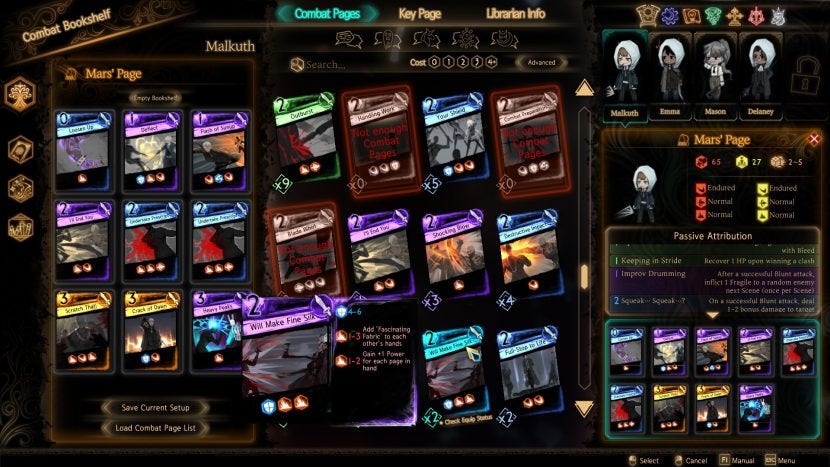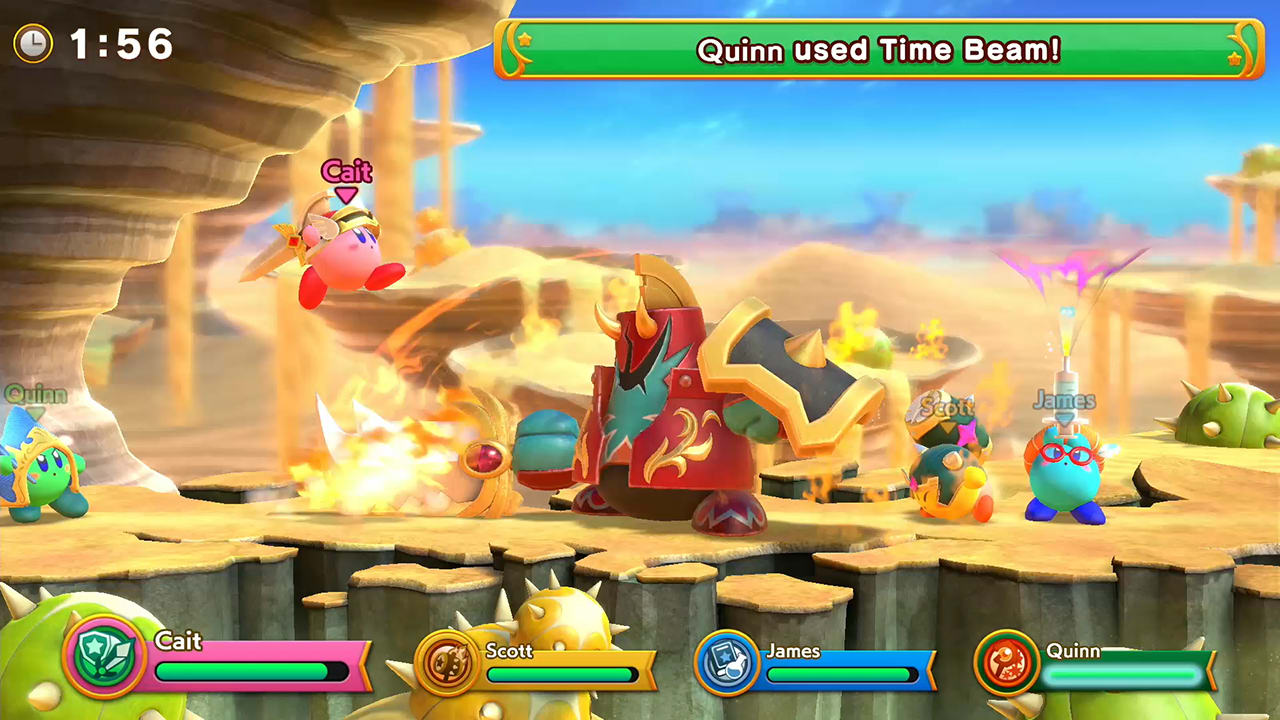Soundodger 2 is a music-based bullet hell game by Studio Bean. It’s the sequel to Soundodger+, and is currently in Early Access on Steam. This game is level based, as each level is usually set to a song, similar to rhythm game levels. The main objective in each level is to score the highest possible rank, achievable by dodging all bullets and collecting hearts. The game is made up of several of these levels, some of which are locked until you get a specific amount of points needed to unlock them. The main objective of the game, then, is to unlock and beat all of the levels. There are currently 30 levels in the game. However, as the game is still in Early Access, new levels and features are constantly getting added into the game.
Here are some levels currently available in the game:
Hopefully, after watching those videos, you can get a feel for how the game looks and sounds. As here comes the Tetrad:
Lens 9: The Elemental Tetrad – (I’m using lens numbers from the app)
Let me start with the Story, or the lack thereof. There is nothing stopping a level-based game to have a story. However, this game’s current selection of levels don’t feel like they’re telling any story. It still could, though, as this game is still in Early Access. This lack of a story is not a problem; this game does not need a story.
As I mentioned, this game is a bullet helI at it’s core. So, what is a bullet hell? In short, it’s a game whose main mechanic revolves around the player dodging hellish amounts of bullets, usually in a pattern. In this regard, Soundodger 2 is a solid bullet hell: it has a wide variety of bullets and collectibles, and since most bullet types are projectiles, it has a robust physics engine, as bullets can be manipulated after it’s fired.
This game mechanic puts some restrictions in how the aesthetics of the game is constructed, and the combination of both requires more recent advances in technology to be pulled off.
This games’ aesthetic is made to match and extend that of Soundodger+, its predecessor, whilst keeping visual clarity for the players. Soundodger 2 achieves this through shapes. Soundodger 2 has 10 bullet types, and all 10 behave differently. To keep levels readable and consistent, these 10 will always act according to their shape. The cones (called ‘arrows’) always move in a straight line, the octahedrons (‘homings’) home in on the player, and ‘hugs’ always need to be collected.
Technologically, as this game is rendered in 3D, the game engine needs to be able to handle the physics and rendering up to tens of thousands of individual bullets, particles, effects, et cetera. It has to be able to do this whilst maintaining a consistent frame rate and physics simulation tick, so that the game does not stutter, slow down, or desynchronize from the music.
Lens 33: Rules
The main rule of the game is simple: dodge the music, touch hugs and hearts. These are pretty much the only rules, so the game is easy to understand for new players. But these aren’t the only set of rules in the game.
There are rules that the bullets must follow as well. For example, bullets can only appear from where an enemy currently is, or ‘arrows’ must go in a straight line. These rules on bullets give the player a sense of security. “Oh, that ‘arrow’ is pointing away from me, I can stay here and not worry about that ‘arrow’ anymore”. However, if you had watched the videos or played this game, you would know that that’s not always true.
Soundodger 2 likes to break its own rules. We have established that Soundodger 2’s bullets behave according to their shape, but they are also affected by level-wide ‘events’, such as timewarp and gravity, breaking that rule and player expectation.
Lens 48: Simplicity / Complexity
These events are the main source of emergent complexity in this game. Despite being simple on their own (gravity pulling bullets up or down, timewarp changing the speed of bullet physics simulation), these events can affect the simplest of bullet motion into something challenging and complex. Not only that, Soundodger 2 lets individual bullets disobey certain effects, breaking more of its own rules, and creating more complexity.
For example, take the passage from 12:32 to 12:40 in the gameplay video above. Observe how the brown ‘arrows’ moving backwards in time juxtaposed against the green ‘bubbles’ create a complex pattern from simple rules that are broken in different ways. Now we’ve almost reached peak Soundodger.
Lens 17: The Toy and Lens 13: Infinite Inspiration
What do you do after beating all of the main levels in the game? Or maybe, you just wish you can play a level based on your favorite piece of music. Well, Soundodger 2 offers a level editor, allowing you to play around with the game mechanics and make your own levels. And oh how people made their own levels.
This level editor offers so many things to the player. Not only does it give them something to do besides what the base game has to offer, the level editor also serves as an outlet of their creativity. With this level editor, players can take inspiration from outside of the game, whether it be music, visuals, or anything they’ve experienced in their life, and express it through this game. There are limitations, of course, but the sheer amount of features available to the players is enough to overwhelm some. The only limit here are the bullets and your imagination.
Once you have created your masterpiece, you could also share it with other players, and even play other players’ level. This activity of sharing levels around will usually lead to discussion and a sense of community (yet another lens) among players, which in turn can help the game grow and keep players engaged far into the future. I know this, as people were still creating and playing levels for Soundodger+ up until the release of Soundodger 2, 8 years later.








































